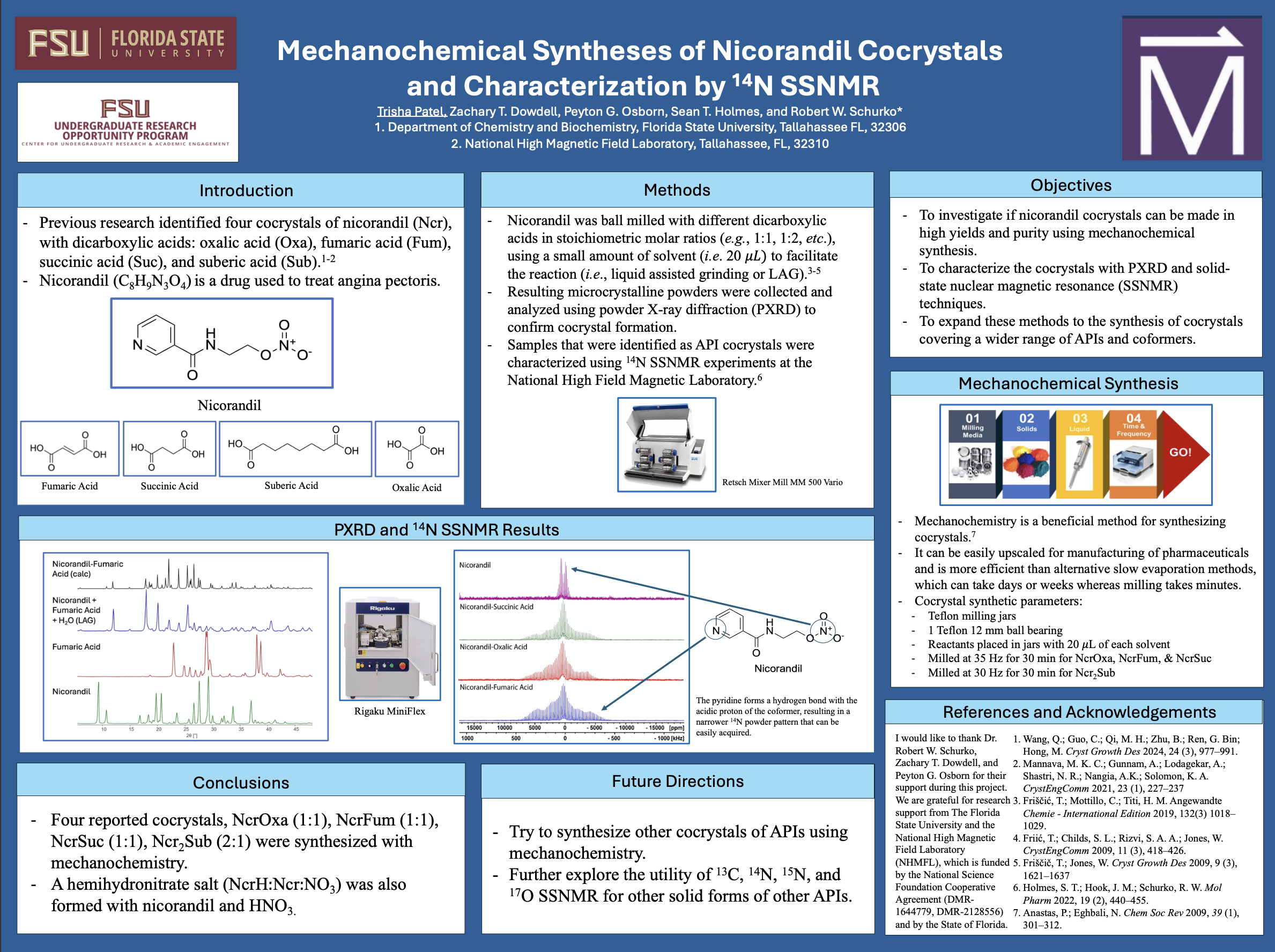Research Symposium
25th annual Undergraduate Research Symposium, April 1, 2025
Trisha Patel Poster Session 2: 10:45 am - 11:45 am/ Poster #262
BIO
My name is Trisha Patel, and I am from Sarasota, Florida. I am a second-year undergraduate student at Florida State University, majoring in biochemistry. During my time at FSU, I have developed a strong passion for chemistry and pharmaceutical research. I have been fortunate to gain hands-on experience in a research lab, where I study cocrystals of active pharmaceutical ingredients using mechanochemistry and SSNMR characterization at MagLAB. This experience has deepened my enthusiasm for scientific discovery, and I am eager to continue expanding my knowledge as I further my research. Looking ahead, I aspire to pursue a PhD and contribute to advancements in the field.
Mechanochemical Syntheses of Nicorandil Cocrystals and Characterization by 14N SSNMR
Authors: Trisha Patel, Dr. Robert SchurkoStudent Major: Biochemistry
Mentor: Dr. Robert Schurko
Mentor's Department: Chemistry and Biochemistry Mentor's College: College of Arts and Sciences Co-Presenters:
Abstract
Nicorandil is an active pharmaceutical ingredient (API) used to treat angina pectoris. Previous research identified four cocrystals of nicorandil with dicarboxylic acids: oxalic acid, fumaric acid, succinic acid, and suberic acid. Such API cocrystals are of great interest, since they may have enhanced solubility, stability, and bioavailability, all of which may enable improved drug performance and formulation flexibility. My work aims to (i) investigate whether nicorandil cocrystals featuring these dicarboxylic acids and others can be synthesized in high purity using a mechanochemical method known as ball milling and (ii) characterize their molecular structures via a combination of X-ray diffraction (XRD) methods and solid-state nuclear magnetic resonance (SSNMR) spectroscopy. Nicorandil was ball milled with different dicarboxylic acids in stoichiometric molar ratios (e.g., 1:1, 2:1) using a small amount of solvent to facilitate the reaction (i.e., liquid assisted grinding or LAG). Subsequently, the resulting microcrystalline
powders were collected and analyzed with powder XRD to confirm cocrystal formation. Samples that were identified as API cocrystals were analyzed using 14N SSNMR experiments at the National High Magnetic Field Laboratory. To date, we have successfully produced nicorandil cocrystals with fumaric, succinic, and oxalic acid. Additionally, a hemihydronitrate salt was formed via milling with nitric acid, highlighting the potential to synthesize a wide variety of cocrystalline forms with mechanochemical methods.
Keywords: Chemistry Mechanochemistry Cocrystals SSNMR Pharmaceutical


